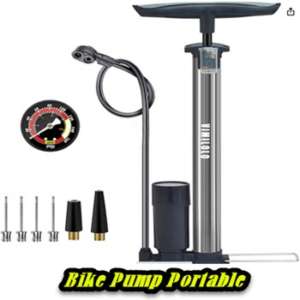Contents
- 1 Cycling Hill Repeats: Training Guide
- 1.1 Understanding the Role of Cycling Hill Repeats in Performance Enhancement
- 1.2 Key Strategies to Improve Climbing Strength
- 1.3 Customizing Your Training: Identifying Individual Needs
- 1.4 Tackling the Challenges: Preparing for Uphill Cycling
- 1.5 Achieving Specificity in Cycling Hill Repeats
- 1.6 Structuring a Week of Climbing-Specific Training Sessions
- 1.7 Cycling Hill Intervals for Improved Power and Endurance
- 1.8 Uphill Cycling Techniques to Conquer Steep Grades
- 1.9 Fueling Your Ride: Nutrition Strategies for Hill Repeats
- 1.10 Hill Climbing Tips for Cyclists: Insights from Pros
- 1.11 Cycling Uphill Benefits Beyond Physical Strength
- 1.12 Conclusion
- 1.13 Source Links
 |
Competitive Cyclist Sale |
Cycling Hill Repeats: Training Guide
Just 60 minutes of cycling hill repeats can change how you handle lactic acid and boost your power1. These sessions include drills like 3 x 8-minute or 6 x 5-minute intervals. They last 24 to 30 minutes, focusing on mastering steep inclines and improving cycling strength2.
By doing progressive climbs and keeping power steady, you boost stamina and aerodynamics in Zones 3–5a1.
Adding cycling hill intervals to your routine, like 8 x 3 minutes or 12 x 2 minutes, mirrors real-world cycling challenges2. These short, intense workouts build confidence and endurance for tackling tough climbs.
To make cycling hill repeats effective, do them on fresh legs, ideally 1 to 2 times a week2. This approach boosts cycling strength and helps you listen to your body’s signals. A 20 percent drop in intensity or power signals fatigue2.

Whether it’s the two-minute surges in Rock the Rollers or the Short Rest Repeats, these intervals are designed to improve your threshold power and climbing skills2. Understanding how form, setup, and movement efficiency affect power lets you maintain a steady pace. This ensures a steady climb to victory1.
Understanding the Role of Cycling Hill Repeats in Performance Enhancement
Hill repeats are a key strategy to boost cycling strength. They are a form of interval training made for competitive climbing events3. This training improves muscle endurance and boosts power output, vital for uphill success. By changing gradients and repetition sets, cyclists can tackle various climbing challenges better3.
Hill repeats offer significant cycling benefits. They focus on a power range (300-330 Watts) to suit different levels, making each session more effective3. Negative splitting, or speeding up in the second half, also enhances performance in races or training3. Adjusting recovery times between intervals extends the workout’s benefits and adaptability3.
| Benefits | Techniques | Training Impact |
|---|---|---|
| Enhanced power output | Varying gradients | Boosted muscular endurance |
| Strategic repetition variability | Negative splits | Increased psychological resilience |
| Optimized recovery timing | Targeted power ranges | Improved aerobic efficiency |
Hill repeats are crucial for competitive cycling, where climbs are key. They help cyclists with busy schedules fit quality workouts into tight schedules. This leads to better FTP and VO2 Max4. For endurance races like everesting, hill reps prepare muscles for long climbs, essential for sustained effort4.
Key Strategies to Improve Climbing Strength
Starting a cycling uphill workout boosts your climbing strength. This is key to better cycling. Using the right gear, like a 30-tooth largest sprocket, makes steep climbs easier5. Also, using compact or semi-compact front chainrings helps your cadence, making hill rides more efficient5.
For better climbing, eating the right foods is important. Eating 1.2g of carbs per kg of body weight for breakfast helps5. Also, eating fast-absorbing carbs before a climb boosts your energy5. Caffeine, at 3mg per kg of body weight, also helps by making climbs feel easier5.
As hills get steeper, your muscles need more strength and endurance. Doing leg presses and half squats can help. You’ll see improvements in three weeks6. Hill repeats, with high intensity and recovery phases, also boost your endurance6.
Tracking your FTP and doing threshold training can greatly improve your climbing. This is especially true for long climbs5. For varied terrains, focus on VO2 max for short bursts and high FTP for longer climbs5. Practical tips include paced breathing and switching between seated and standing to pedal more efficiently2
Consistency and persistence are key in mastering hill training. Whether it’s using advanced gear or improving nutrition and training, each step helps. Following these tips not only prepares you for uphill cycling but also makes cycling more enjoyable and efficient.
Customizing Your Training: Identifying Individual Needs
Customizing your training is key for any cyclist wanting to get better. By focusing on your own needs and using the right training zones, you can improve your cycling hill repeats and plan better for climbing hills on a bike. First, you need to know where you stand. This means checking your current abilities and finding out what you’re good at and what you need to work on.
Look at how you do on different types of climbs. Do you excel at long, steady climbs or quick, short ones? Knowing this helps you tailor your training to fit your needs.
| Training Zone | Description | Impact |
|---|---|---|
| Zone 1 (Recovery) | 1-55% FTP or 50-60% HRmax | Focuses on active recovery and endurance building, crucial for long rides. |
| Zone 2 (Endurance) | 56-75% FTP or 60-70% HRmax | Targets sustainable power for prolonged efforts, increases efficient fat utilization. |
| Zone 3 (Tempo/Sweet Spot) | 76-90% FTP or 70-80% HRmax | Balances intensity and endurance, ideal for increasing metabolic fitness. |
| Zone 4 (Threshold) | 91-105% FTP or 80-90% HRmax | Enhances power at lactate threshold, important for short, intense climbs. |
| Zone 5 (VO2 Max) | 106-120% FTP or 90-95% HRmax | Boosts cardiovascular and anaerobic capacity, beneficial for rapid hill accelerations. |
Getting better at climbing also means managing your weight. Losing extra pounds can make you faster and more energetic when going uphill. By focusing on your personal metrics and creating workouts just for you, you can use hill climbing tips for cyclists to get even better7.
energetic when going uphill. By focusing on your personal metrics and creating workouts just for you, you can use hill climbing tips for cyclists to get even better7.
To climb more efficiently, mix up your workouts. Use both steady and interval-based hill exercises. By using different training zones, you can meet your specific needs and climb better7. Successful cycling hill repeats need endurance and a focus on the right training. This means paying attention to the specific times and intensities for each zone7.
Finally, making your training plan fit your unique needs helps you improve faster. This way, every workout brings you closer to mastering climbing hills on a bike.
Tackling the Challenges: Preparing for Uphill Cycling
To get ready for uphill cycling, you need to build strength and strategy. Hills like Streatley Hill in Reading have steep parts up to 25.9%. Regular uphill cycling workouts are key for tackling such steep inclines8.
Coach Alison Wood recommends starting tough sessions first. This means doing hill repeats early in the week. Then, do longer, easier rides later8. This helps build endurance and recover well for the next session9.
New cyclists should start with easier hills. Focus on keeping a steady pedaling speed to boost strength10. Avril from Surrey shows how indoor training can prepare you for tough hills8.

Efficiency and pacing are key in uphill cycling. Learning to shift gears and manage effort can prevent knee pain10. Adding squats and lunges to your workout can also strengthen your legs for uphill rides10.
Uphill cycling is as much about mental strength as physical. Overcoming steep hills boosts confidence and skill. Make uphill cycling a core part of your training to tackle any hill10.
Achieving Specificity in Cycling Hill Repeats
When it comes to hill repeats cycling workouts, being specific is key. Tailoring your workout to match the demands of your race or ride boosts performance. By choosing cycling hill intervals that match the climb you’ll face, you prepare your body to perform at its best.
A typical hill repeats cycling workout lasts about an hour. During this time, a cyclist can do 10 hard hill repeats in their main set11
. Each repeat lasts from 30 seconds to two minutes11. There’s a 2-3 minute break in between to help you keep going strong11.
The best effort level for these repeats is a high 8-9 out of 10. If you feel really strong, aim for 9-1011.
| Workout Segment | Duration | RPE |
|---|---|---|
| Warm-up | 15-20 minutes | 6-7 |
| Main Set | 60 minutes | 8-9, 9-10 if fresh |
| Cool-down | 15-20 minutes | Low |
To make cycling hill intervals more effective, understand how your body reacts to different intensities and times. This helps you get closer to race conditions. It also trains the right energy systems and muscle groups, improving your climbing skills.
Practical training should also consider the mental and physical challenges of hill climbs. Regular hill repeats can improve your speed, fitness, and technique12. Keeping a high cadence, around 90 rpm, helps manage fatigue and boosts efficiency12. This structured approach enhances both physical and mental abilities, leading to better cycling performance.
Lastly, make sure your hill repeats training includes proper recovery. Avoid hard training until muscle soreness goes away. This ensures you recover well and are ready for the next training session11.
Structuring a Week of Climbing-Specific Training Sessions
To get the most out of cycling hill repeats training, having a weekly plan is key. This plan makes sure each workout targets different parts of uphill cycling techniques. It balances hard training with rest, as shown by the data13.
Monday is a rest day, letting the body recover and get ready for tough climbs13. On Tuesday, focus on threshold efforts. This means keeping a steady power output close to your Functional Threshold Power (FTP). It’s vital for boosting endurance and strength in climbs13.
Wednesday’s workout includes varied intensity efforts. Try intervals at specific FTP percentages. This boosts both your aerobic and anaerobic systems, making you stronger and more stamina-rich in climbs13.
Thursday is for short, intense hill repeats. These mimic the steep parts of races. Friday’s ride is longer, with lots of climbing. It builds endurance for long climbs13.
Saturday is for technique-focused sessions. These sessions improve your ability to handle different terrains and gradients. Good technique saves energy and keeps you climbing strong13.
Sunday ends the week with an optional active recovery session. This could be a light ride or cross-training. It helps muscles recover while keeping your heart rate up13.
A week of climbing-specific training gets you ready physically and mentally. It builds the strength and techniques needed for hill climbing. Losing ten pounds can make you 7-10% faster in climbs, showing how weight affects efficiency13. This training follows the natural cycle of getting stronger, then adding specific skills for the event13.
Cycling Hill Intervals for Improved Power and Endurance
To boost power and endurance in cycling, cycling hill repeats are key. This method involves short, intense efforts followed by rest. It helps cyclists reach their limits and boost their aerobic fitness14.
followed by rest. It helps cyclists reach their limits and boost their aerobic fitness14.
Intervals of 4-6 minutes at 20% above FTP are best for endurance14. They target slow-twitch muscle fibers, vital for long rides14.
Choosing a hill with a 6-8% gradient is crucial for effective intervals15. Cyclists should aim to reach top speed for 30 seconds to one minute. This should be at 95% of their maximum effort15.
This method not only strengthens muscles but also boosts power for long climbs15.
Start with four intervals and increase to eight to build endurance14. Longer hill training, like 20-40 minute climbs, also boosts fitness16.
Consistency and 10-minute rest between climbs are key for better climbing15. Strength training, like squats and deadlifts, also helps16.
Experts like Coach Neal Henderson stress the importance of targeted hill training on bike for better performance1416.
Uphill Cycling Techniques to Conquer Steep Grades
Learning how to cycle uphill is key for any cyclist. It’s about adjusting your pace and managing your energy. For example, cycling at 65-80 RPM helps keep you moving without getting too tired17. Also, picking the right gear before you start can make climbing easier and more comfortable18.
Where you position yourself on the bike matters a lot. Try to avoid the steepest parts and use wider corners to keep your speed up17. This helps you stay steady and saves energy. It’s also important to pace yourself, breaking climbs into smaller parts to keep your energy up18.
Hill climbing tips for cyclists often say to stay seated for more power and endurance. But, getting out of the saddle for short, steep parts can give you a boost17. Don’t forget about the wind, as it can make climbing even harder17.
Getting in shape is also crucial. Strong core muscles and smooth movements help you climb better, just like pro cyclists do17. Indoor cycling can also help build strength for outdoor climbs18.
Combining the right techniques, gear, and training lets you tackle steep hills more easily. Every climb is a chance to get better and challenge yourself as a cyclist.
Fueling Your Ride: Nutrition Strategies for Hill Repeats
Cyclists looking to boost their performance on hill repeats need to focus on nutrition. The right foods and amounts can greatly affect how well they perform and recover. This is especially true for the tough climbs19.
The American College of Sports Medicine recommends 30 to 60 grams of carbs per hour to keep energy up19. But for intense hill repeats, more carbs are needed. Studies show 60 to 100 grams per hour can improve race performance in endurance cycling19.
Using energy foods with a mix of sugars can boost energy use and endurance19. It’s also smart to plan what you eat based on how long you’ll be riding. For short climbs under an hour, focus on staying hydrated. Most riders have enough stored energy for these19.
In rides lasting 1 to 3 hours, it’s key to replace fluids and carbs. Aim for 30 to 60 grams of carbs per hour19.
| Ride Duration | Carbohydrates Needed Per Hour | Hydration Advice |
|---|---|---|
| Short (1 hour or less) | Not Critical (enough stored energy) | Focus on fluid replenishment |
| Medium (1-3 hours) | 30-60 grams | Essential to replenish |
| Long (3 hours or more) | 60-100 grams | Replenish fluids, electrolytes, and carbs |
For longer or more competitive events, planning meals is key. A low glycemic index meal with 300-600 calories, 3 hours before, is effective20. Also, adding 20g of carbs 30-60 minutes before can keep blood sugar steady20. Supplements like beetroot can also boost performance, reaching peak levels 1-3 hours after20.
After a race or intense training, recovery is just as important as performance. Eat a balanced meal with carbs and protein within an hour to help muscles recover and replenish energy19. This not only helps you recover faster but also prepares your body for future rides.
Hill Climbing Tips for Cyclists: Insights from Pros
Climbing tips for cyclists focus on technique and endurance. Professional cyclists stress the need for a personalized approach to hill training on bike. This includes understanding hill dynamics and using strategies to boost performance21. Clinton, a UK National Hill Climb Champion, shows how structured training and mental toughness are key22.
For those doing cycling uphill workouts, improving your technique can make a big difference. Experts recommend keeping a steady pace and using the terrain to your advantage. For example, speeding up at the top of short hills can give you an edge. Also, changing your body position on long climbs helps reduce fatigue and boosts power23.
Using gears wisely and keeping the chain tight can prevent losing power and keep pedaling efficient. Pedal stroke efficiency is also crucial, with studies showing a 15 – 20% power increase when using the upstroke effectively23. Adding high-cadence drills and VO2 max sessions to your training prepares your legs for faster cadence during climbs. This is especially important for races like RideLondon, with its 1,236m elevation over 100 miles2221.
| Technique | Description | Benefits |
|---|---|---|
| Varying position | Switching body positions on long climbs to engage different muscle groups. | Reduces muscle fatigue and increases power output. |
| Gear Utilization | Efficient shifting and maintaining chain tension. | Conserves energy, avoiding power drops per shift. |
| Pedal Efficiency | Improving upstroke and overall pedal stroke. | Enhances power output by up to 20%. |
| High-Cadence Drills | Training at 100rpm on flat surfaces for extended periods. | Prepares legs for higher cadence during uphill climbs. |
| VO2 Max Sessions | Intense short bursts above threshold to simulate steep climbs. | Increases anaerobic capacity and endurance for challenging climbs. |
Lastly, using climbing tips for cyclists from experienced pros boosts your physical and mental skills. Each element, from pacing to workout intensity, is vital for mastering steep ascents22.
Cycling Uphill Benefits Beyond Physical Strength
The benefits of cycling uphill go far beyond just getting stronger. They also boost your mental health and overall well-being. Research shows that those who do hill repeats cycling workout see big gains in muscle endurance, mental strength, and heart health24.
Regular uphill cycling builds mental toughness. It teaches you to handle the discomfort of steep climbs. This mental strength matches the physical gains, like more power and better metabolism at lower cadences24. It also sharpens your focus and stress management skills.
However, hill cycling doesn’t greatly improve bone density. This means you need to add strength training to keep your bones strong25. Mixing different training types helps build muscle and bone health, key for lasting fitness and avoiding injuries.
- It boosts your heart health with intense workouts24.
- It strengthens your legs through hard work and recovery24.
- It helps with weight control by burning lots of calories.
- It builds mental toughness, teaching you to overcome challenges.
Also, think about the technical side of uphill riding. Using lighter bike parts makes climbing easier. Lighter wheels, for example, help you go up hills faster with less effort26.
In summary, the advantages of hill repeats cycling workout and other uphill challenges are wide-ranging. They improve power, endurance, mental strength, and overall health. By tackling these challenges, cyclists see big gains in their training.
Conclusion
Hill repeats are key in cycling, helping riders get better at climbing hills. They make climbing faster and smoother. Doing hill repeats over 3 miles with an incline over 5% boosts climbing skills a lot.
For short, steep hills, doing ten repeats on grades over 15% is best. These should be about a mile long. Adding 1-2 hill-specific sessions a week can greatly improve performance. Adjusting your gears is smart if you don’t have natural hills nearby27.
When doing hill repeats, a 6-7% grade is good for a 1-hour workout. Paces vary from 7:33 to 9:01 min/mile, with 2-minute breaks. This shows the importance of tailoring your approach to your abilities and the terrain28.
Practicing hill repeats well can make your rides better in many ways. World-class cyclists use specific techniques and nutrition plans. With the right advice and effort, hill repeats can lead to big wins and a better cycling journey.
 |
 |
We earn from qualified Amazon purchases with NO cost to you. ANY item that you need or were going to purchased anyway through any of our links, helps support this site. Thank you for your support!
If you enjoyed learning about this week’s featured bicycle, don’t miss out on more classic bike goodness! Visit our website at classicjapanesebicycles.com for an extensive collection of timeless Japanese bikes and their unique stories. Plus, check out our YouTube channel, Bicycle Restoration Man, for detailed restoration videos and showcases of our finished projects. Subscribe and join our community of bike enthusiasts!
Source Links
- Progressive Hill Repeats to Pretend You Have Power-SM
- Master Mountain Climbs With These 4 Hill Workouts
- How To Improve Your Cycling Hill Repeat Workouts — High North Performance
- The usefulness of hill reps?
- How to climb hills faster on your bike | 10 tips and 2 training sessions to improve your climbing
- How to Improve Cycling Climbing: 12 Tips – Road Cycling Academy
- Cycling training Plan: Training zone, plans for all level cyclists and how to use
- Elle Linton’s guide to hill climbs when out cycling
- Hill climb intervals –
- How to Overcome the Challenge of Cycling Uphill: Training Tips and Gea
- One-Hour Workout: Hit ‘Em Hard Hill Reps – Triathlete
- Hill climbing – repetitions, training and technique
- Hill Climb Training Plan for Cycling – The Knowledge
- Workout of the Week: High-Torque Hill Repeats
- Hill intervals: improve your climbing
- How to improve your performance on a hilly ultra endurance cycling or running event
- How to cycle uphill techniques –
- How to Conquer Hills Like a Pro: Top Tips for Tough Climbs
- This Guide Will Help You Nail Down Your Fueling Needs for Any Ride Distance
- How to Fuel a Hill Climb – Short & Sharp!
- How To Tackle Hills In Cycling | Top Tips For Climbing – keep it simpElle
- No climbs and hills? How to train for mountains in the flat
- Tips for Climbing – It’s not just about W/kg in the real world
- Hill reps and overgearing: What does the science say?
- Can Riding Up Hills Be Considered Strength Training? [Archive]
- How to become a better climber in just one month
- How to Use Hills to Improve Your Cycling
- A Guide to Hill Intervals or Hill Repeats





